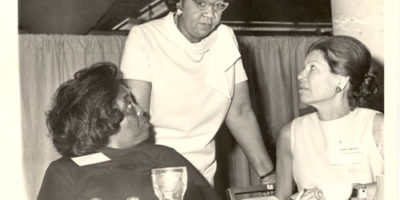Redefining Resistance
In the annals of Holocaust study, resistance has probably been one of the most sensitive topics. In the 1950s, there was already a common mantra: “They went like sheep to the slaughter.” A new book by Nechama Tec, Resistance: Jews and Christians Who Defied the Nazi Terror (Oxford University Press), adds new and nuanced layers to the discussion.
Tec’s best-known book is likely Defiance, which became a successful Hollywood movie starring Daniel Craig. Here, in her accessible style, Tec challenges scholars such as Bruno Bettelheim and Raul Hilberg, who believed Jews were entirely compliant and that this compliancy resulted from a 2000-year-old “ghetto mentality.” Bettelheim took this critique a step further and even condemned Anne Frank’s family for not arming themselves with a gun so that they could shoot those who came to arrest them. He described their hiding place as “a trap without an outlet.”
Hannah Arendt thought Bettelheim and Hilberg’s thesis ludicrous. Though she also believed Jews had not fought back, she argued that neither had any other group which was oppressed by the Nazis. Therefore, to attribute their response to some sort of historical conditioning was simply wrong. (Strangely, Tec conflates Arendt’s views with those of Bettelheim and Hilberg.)
Tec recognizes that relying on the narrowest definition of resistance — armed uprising only — produces a distorted view of Jews’ responses. It ignores the fact that it was nearly impossible for Jews, particularly those incarcerated in camps and ghettoes, to obtain arms. It ignores the courage of the children, particularly of those who smuggled food into the ghettoes. They not only helped many people survive, but forced the Germans to use police to try to disrupt this chain. It fails to recognize the defiance of Jews who, risking their lives, created crucial archives documenting life in the ghetto, the resourcefulness of Jews who lived “underground,” and the bravery of those who served as couriers, ferrying information among resistance groups. Most of the couriers were women, and, with a few exceptions, their story has not been told. Tec’s chapter on the topic begins to rectify the situation. There were the currency smugglers, contraband carriers, and black marketers. There were Jews who, defying Nazi laws, created extensive educational activities in the ghettoes. Janusz Korczak, a noted Polish educator, also engaged in a non-normative form of resistance. Offered refuge outside the ghetto, Korczak refused to abandon the children in his orphanage and, instead, accompanied them to what he knew was certain death. Korczak was criticized after the war for his “passive” response. One could praise him instead for his heroism.
But Tec recognizes, as have other scholars before her, that even while calling for a broader definition of resistance, there is the danger of too broad a definition. If everything became a form of resistance then, in essence, nothing was resistance. She treads a careful path through this thicket in an important addition to the corpus of literature on the Holocaust.
Deborah E. Lipstadt is Professor of Modern Jewish and Holocaust Studies at Emory University. Her most recent book is The Eichmann Trial.




